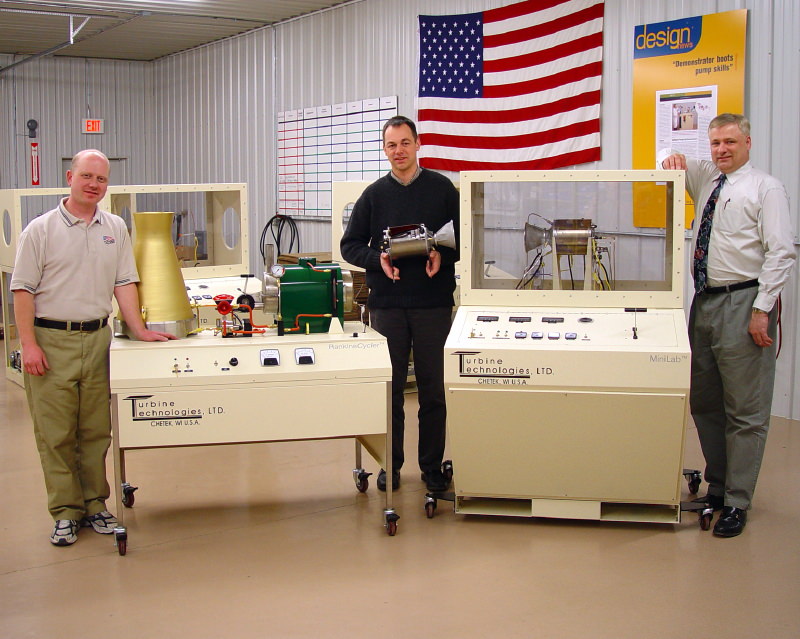Universite de Liege Professor Modifies Small Turbojet for Research
Olivier Leonard of the Universite de Liege in Belgium completed a visit to Turbine Technologies' factory where he participated in the modification and testing of an engine specifically for experimentation. Recognizing the usefulness of the SR-30 Turbojet as a jet engine research platform, Professor Leonard requested a particular modification to further his work in advancing jet engine testing and operational measurement techniques.
Utilizing a stock SR-30 from the Universite de Liege's MiniLab Gas Turbine Power System, a series of modifications were engineered that allowed the mounting of a specialized linear capacitive distance sensor. This sensor was positioned in such a way that an active measurement could be made of turbine blade tip distances during operation of the engine.
"We worked together with Dr. Leonard to engineer a safe modification to his engine that would permit the type of measurements he was after," said Tom Kutrieb, Turbine Technologies' Director of Engine Manufacturing. "The initial idea was raised almost a year ago, but because of the school's heavy usage of the engine and Dr. Leonard's busy schedule, it was only now that we've had the opportunity to make the modifications. The sensor installed was considered so valuable and essential to Dr. Leonard's research that he personally delivered it and was on hand to observe and test its installation."
In just a few days, the modifications were complete and the engine was installed in Turbine Technologies' test cell for initial trials and to calibrate the sensor. Professor Leonard provided a signal-conditioning unit that interfaced directly with the equipment in the company's test cell. With the engine under power, instrumentation showed the sensor to be working properly and that useful data would be available. Even after a short test run, it was apparent that turbine blade growth due to thermal expansion would be easily measured with the sensor and signal conditioner.
Professor Leonard is the Director of Turbine Propulsion Research at Liege. He has co-authored several papers on the development of new measurement methodologies that enable robust real time detection of faulty measurements through statistical means, and to suppress these faults during the test. Automatic learning methods such as artificial neural networks are also being studied for application and matching to the developed robust validation procedures. The end goal is to develop an efficient way to identify which sensor may be contributing faulty data during engine tests in real time rather than during data reduction well after the test is completed. The SR-30 engine factors prominently in the development of these methods because of acquisition cost, operating economy and ease of operation.
"Turbine Technologies usually discourages operator modifications of engines. However, when accomplished with factory approval and used in a controlled research setting, the engine is ideally suited for studies such as those being conducted by Dr. Leonard. We welcome such opportunities and like to use his work as an interesting example of what the SR-30 and MiniLab Gas Turbine System are capable of in a research setting," remarked Mr. Kutrieb.

Professor Leonard holds an SR30 Cutaway Model while determining where to install the active turbine blade tip clearance sensor. "I had quite a successful week in Chetek!" said Professor Leonard following the installation and test of the measurement system